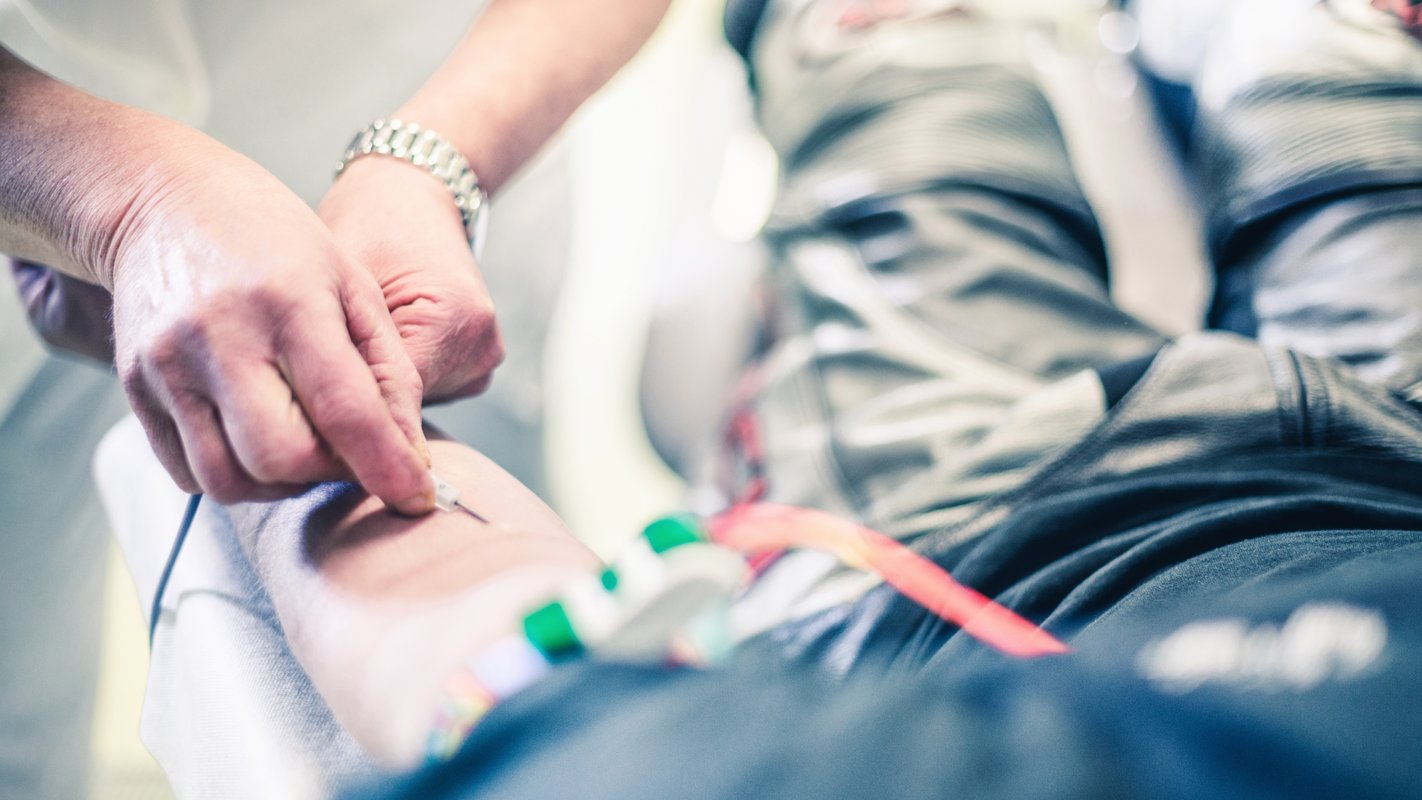Online Phlebotomy classes

Are you interested in pursuing a career in the medical field as a phlebotomist? If so, you may be considering taking phlebotomy classes. In today's digital age, online phlebotomy classes have become a popular option for many students.
Key Points
- Online phlebotomy classes offer flexibility, allowing you to learn at your own pace from home.
- Before enrolling in an online program, check your state's requirements. Some states like California and Florida require on-site training components for certification or licensure. Ensure your program meets these criteria to pursue your career goals effectively.
- Average annual salaries for phlebotomists are around $41,810, making it a rewarding career choice.
Can I complete the entire phlebotomy program online?
Yes, unless you are located in certain states. But, the CPT certification requires an additional 30 venipunctures and 10 capillary sticks on a live person in a healthcare setting. Your program should match you with an in-person site for you to practice.
How long does it take to complete an online phlebotomy program?
The length of online phlebotomy programs can vary, but most programs take 2 weeks to 6 months, depending on your pace and the specific program requirements. Learn more about how long it takes to become a phlebotomist.
Is an online phlebotomy certification accepted by employers?
Yes. Employers usually look out for reputable organizations like the NHA or ASCP, so as long as you have the certification there's no difference if you did the class online or in-person.
What is the career outlook for phlebotomists?
According to the Bureau of Labor Statistics (BLS), employment of phlebotomists will grow by 8% from 2022 to 2032, much faster than the average for all occupations. This growth is due to the increasing demand for diagnostic testing and the aging population requiring preventive medical services.
Where do phlebotomists work?
Certified phlebotomists can find employment opportunities in various healthcare settings, such as hospitals, medical laboratories, blood donation centers, and physician offices. With experience and additional training, phlebotomists may also advance to supervisory roles or pursue further education in related fields, such as nursing or medical laboratory technology.
How much do phlebotomists earn?
The average annual salary of phlebotomists was $41,810 in May 2023, which is about a $20.10 hourly rate. The highest-paying cities for phlebotomists include California, Washington, New York, Maryland, and Delaware.
Phlebotomy classes by city
To help you find a suitable phlebotomy class at Dreambound, we've compiled the most comprehensive list of phlebotomy classes in the US. Below, you can find a list of phlebotomy classes organized by city. If you don't see your city listed, you can always search by zip code.
- Phlebotomy schools near me in Albany
- Phlebotomy schools near me in Albuquerque
- Phlebotomy schools near me in Allentown
- Phlebotomy schools near me in Augusta
- Phlebotomy schools near me in Austin
- Phlebotomy schools near me in Bakersfield
- Phlebotomy schools near me in Baltimore
- Phlebotomy schools near me in Baton Rouge
- Phlebotomy schools near me in Birmingham
- Phlebotomy schools near me in Boston
- Phlebotomy schools near me in Bridgeport
- Phlebotomy schools near me in Buffalo
- Phlebotomy schools near me in Cape Coral
- Phlebotomy schools near me in Charleston
- Phlebotomy schools near me in Charlotte
- Phlebotomy schools near me in Chicago
- Phlebotomy schools near me in Cincinnati
- Phlebotomy schools near me in Cleveland
- Phlebotomy schools near me in Colorado Springs
- Phlebotomy schools near me in Columbia
- Phlebotomy schools near me in Columbus
- Phlebotomy schools near me in Dallas/Fort Worth
- Phlebotomy schools near me in Dayton
- Phlebotomy schools near me in Deltona
- Phlebotomy schools near me in Denver
- Phlebotomy schools near me in Des Moines
- Phlebotomy schools near me in Detroit
- Phlebotomy schools near me in Durham
- Phlebotomy schools near me in El Paso
- Phlebotomy schools near me in Fresno
- Phlebotomy schools near me in Grand Rapids
- Phlebotomy schools near me in Greensboro
- Phlebotomy schools near me in Greenville
- Phlebotomy schools near me in Harrisburg
- Phlebotomy schools near me in Hartford
- Phlebotomy schools near me in Houston
- Phlebotomy schools near me in Indianapolis
- Phlebotomy schools near me in Jackson
- Phlebotomy schools near me in Jacksonville
- Phlebotomy schools near me in Kansas City
- Phlebotomy schools near me in Knoxville
- Phlebotomy schools near me in Las Vegas
- Phlebotomy schools near me in Little Rock
- Phlebotomy schools near me in Los Angeles
- Phlebotomy schools near me in Louisville
- Phlebotomy schools near me in Madison
- Phlebotomy schools near me in McAllen
- Phlebotomy schools near me in Memphis
- Phlebotomy schools near me in Miami
- Phlebotomy schools near me in Minneapolis
- Phlebotomy schools near me in Nashville
- Phlebotomy schools near me in New Orleans
- Phlebotomy schools near me in New York
- Phlebotomy schools near me in North Port
- Phlebotomy schools near me in Oklahoma City
- Phlebotomy schools near me in Omaha
- Phlebotomy schools near me in Orlando
- Phlebotomy schools near me in Oxnard
- Phlebotomy schools near me in Palm Bay
- Phlebotomy schools near me in Philadelphia
- Phlebotomy schools near me in Phoenix
- Phlebotomy schools near me in Pittsburgh
- Phlebotomy schools near me in Poughkeepsie
- Phlebotomy schools near me in Providence
- Phlebotomy schools near me in Provo
- Phlebotomy schools near me in Raleigh
- Phlebotomy schools near me in Richmond
- Phlebotomy schools near me in Salt Lake City
- Phlebotomy schools near me in San Antonio
- Phlebotomy schools near me in San Bernardino/Riverside
- Phlebotomy schools near me in San Diego
- Phlebotomy schools near me in San Jose
- Phlebotomy schools near me in Scranton
- Phlebotomy schools near me in Springfield
- Phlebotomy schools near me in St. Louis
- Phlebotomy schools near me in Stockton
- Phlebotomy schools near me in Tampa
- Phlebotomy schools near me in Toledo
- Phlebotomy schools near me in Tucson
- Phlebotomy schools near me in Tulsa
- Phlebotomy schools near me in Worcester
Final Thoughts
Obtaining an online phlebotomy certification can be a great way to enter the field of phlebotomy or advance your career. With the flexibility and convenience of online learning, you can gain the necessary knowledge and skills to become a certified phlebotomist from the comfort of your own home. By following the steps outlined in this article, you can take the first steps toward achieving your goal of becoming a phlebotomy professional.
If you're exploring options in this field in various locations, Dreambound's extensive guides are a great resource. We've got detailed insights for different states. Check out some additional guides below:

Winlynd Caballero is a member of Dreambound's Sales team. She helps in handling the company's finullcial transactions, generating reports, and school sales. Beyond her responsibilities in the realm of numbers and business, Winlynd finds herself deeply immersed in a world of art and music.




